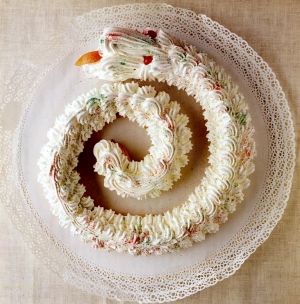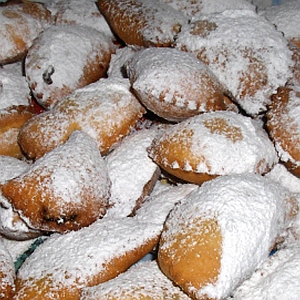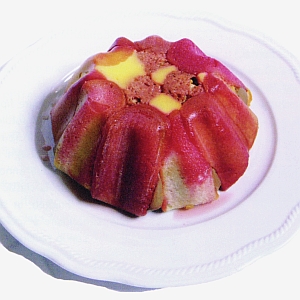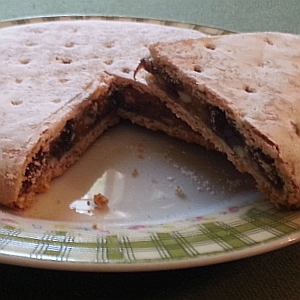Christmas sweets
During the Christmas and Santo Stefano lunches, the Biscione was the master, a dessert from the past already known to Marco Gavio Apicius, the epicurean of the time of Tibero, author of the oldest treatise on Roman cuisine.
BAKED AND FRIED TORTELLINI
At Christmas time, the Tortellini, fried or baked, make their appearance with their exquisite filling made of jams, chestnuts, walnuts, pine nuts, coffee powder, rum or anisette. It is another typical dessert of the local tradition, even deriving from Renaissance cuisine, characterized by the mixture of sour and sweet.
TRIFLE
The trifle is an ancient spoon dessert. In the XIX century, the base was sponge cake, soaked in liqueurs such as alcherme and rosolio, filled with custard.
Preparation: beat the egg yolks with the sugar to make the whole frothy and almost white. Slowly pour the flour then, slowly again, the milk; add the lemon zest and the vanillin. Cook and stir with a wooden spoon until the cream thickens without boiling. Previously you have prepared the mold by covering the inside with the ladyfingers, cut into two or three parts, and soaked in the liqueur. Lay a layer of yellow cream and cover it with other soaked ladyfingers. To the remaining yellow cream add the dark chocolate sprinkled in the mixer and pour it into the mold and complete with a layer of ladyfingers. The soup made in this way will be placed in the refrigerator. Before serving it you can sprinkle it again with alchermes or a mixture for desserts.
SPONGATA
It is an ancient dessert that someone even traces back to Roman times, to Tito Petronius Arbiter who, in the "Satyricon", describes a similar cake. It is a gem of Reggio Emilia cuisine that never fails at Christmas and New Year's Eve dinners. Its name seems to derive from "sponga" that is sponge, due to the appearance of the pinched surface that makes it look like a sponge.
RECIPE
The skill in preparing the spongata is expressed in the pesto: first of all you need the walnuts of the Emilian hills which must be processed as soon as they are picked up. The walnuts are opened and the kernel is extracted: about 100 quintals of kernels are needed for the Christmas production of spongata. Each ingredient must be wisely combined with precise processing times that have to be respected. On large tables the chopped walnuts are spread with honey, and kneading begins. Then add the almonds and raisins and knead again; the already hard pesto is turned, then the pine nuts - the most delicate, not to be broken - are to be added. The dough should be done with wooden shovels and with your hands. Finally, the mixture is sprinkled with spices, thirteen different types, which give flavour to the spongata.









